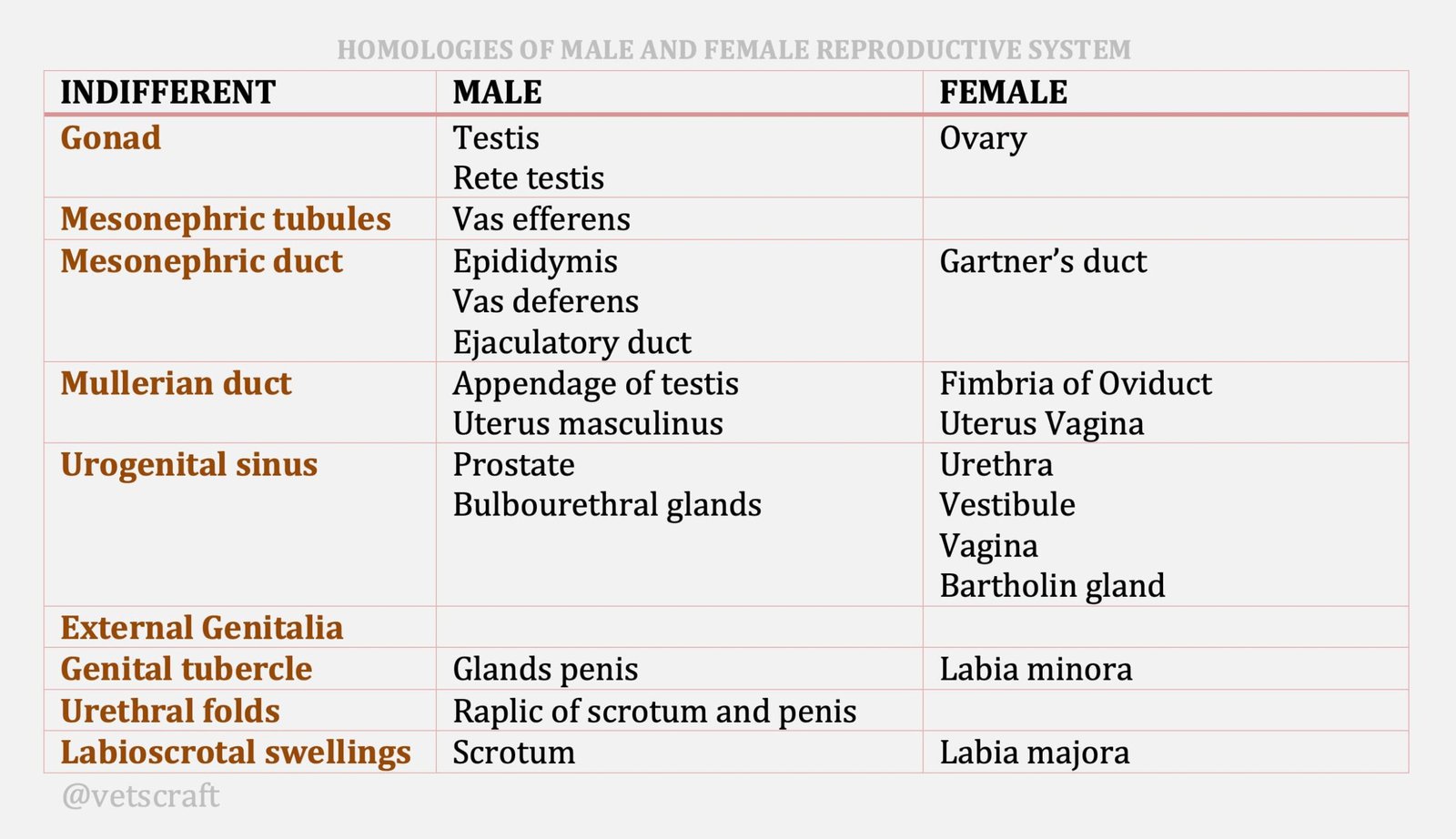TABLE OF CONTENTS
Anatomical Factors Affecting Fertility
Anatomical factors affecting fertility are congenital anomalies, freemartinism, segmental aplasia, white heifer disease, etc.
Anatomical factors affecting fertility are:
- Congenital Anomalies
- Freemartinism
- Segmental Aplasia of the Mullerian ducts and White Heifer Disease
- Parovarian Cyst
- Double External Os of the Cervix
- Congenital Lack of Endometrial Glands
- Uterus Didelphys
- Abnormal Wolffian or Gartner’s ducts

Congenital Anomalies
Ovarian agenesis
- Ovarian agenesis is very rare disease in animals.
- Both ovaries absent in this case.
- Inherited autosomal dominant gene.
- No estrus signs, udder development and under developed genital tract.
Ovarian hypoplasia
- Ovarian hypoplasia is also rare.
- Ovarian hypoplasia caused by a single autosomal gene with incomplete penetration is a condition in which one or both ovaries are small, narrow and functionless.
- One or both ovaries are small, narrow and functionless.
- Should be differentiated from anestrous ovaries in heifers.
- 87.1% left ovary is affected.
- The affected ovary may be partially or totally hypoplastic and undergoes incomplete development as a part or whole lacking the normal number of primordial follicles.
- Depending on the severity of the hypoplasia and whether condition is unilateral or bilateral, infertility or sterility will result.
Abnormalities of the uterine tubes like segemental aplasia, unilateral aplasia and duplition are rare.
Freemartinism
- Result of vascular anastomosis of the chorioallantoic sacs of heterozygous fetuses in multiple pregnancies.
- External genitalia appears normal.
- Prominent clitoris with a tuft of hair at the ventral commissure of vulva.
Internal Genitalia
- Shows masculinization
- The gonads resemble testes and well developed epididymis, vasa deferentia and vesicular glands are present.
- The female genital tract may be smaller with a persistent hymen and hypoplastic ovaries.
- 92% of the heifers born as co–twins to bulls are sterile.
Diagnosis
Rectal examination
Segmental aplasia of tubular genital tract and hypoplastic ovaries.
Vaginal examination
- ½” test tube or glass speculum is inserted after lubrication into the vulva.
- In freemartin-does not go beyond 3–4″ i.e. beyond the region of hymen.
- In normal heifer goes beyond upto 5 – 7″ and cervix could be located.
Karyotyping
- Most accurate diagnosis for freemartinism.
Segmental Aplasia of the Mullerian ducts and White Heifer Disease
- Segmental aplasia of the Mullerian ducts and imperforate hymen are developmental defects of the Mullerian ducts that lead to various anomalies of the vagina, cervix and uterus.
- Seen primarily in white shorthorn cattle.
- Ovaries, fallopian tubes and mostly cranial part of uterine horns are normal.
- Varying degrees of aplasia of uterus, cervix and vagina occurs.
- White coat color.
- If one horn of the uterus is normal, conception possible.
- Persistence of hymen–depending on the degree it is detected at the time of AI or parturition.
- There is normal cyclic behavior and secretary activity of the tubular genital tract.
- Hence wherever a developmental obstruction of the tubular tract occurs in a mature heifer, the lumen in front of the obstruction becomes distended by cyclical secretions.
- May become infected by pyogenic organisms causing fever and straining.
- May be relieved by trocar and canula.
- Not advisable to make surgical correction or breed because of heritable nature.
Parovarian Cyst
- About 1 cm in diameter and present in the mesosalpinx.
- Unless impinge oviduct and reduce its lumen unimportant.
Double External Os of the Cervix
- Occationally observed in cattle.
- Occurs due to failure of the Mullerian ducts to fuse.
- Mostly the caudal half of the cervix is involved.
- May occur as a band caudal to the cervix and as a true double external os.
- Affected cows usually conceive and clave normally. Sometimes may result in dystocia.
- Delayed conception abortion, premature birth ,retained placenta and infertility
- On rectal examination the cervix is broader and flatter.
- Vaginal examination reveals the condition.
- Affected cows usually conceive and calve normally. Occasionally a portion of the fetus will pass on either side of the band of tissue and result in dystocia that is easily relieved by incising the band.
Congenital Lack of Endometrial Glands
Congenital lack of endometrial glands condition has been observed in few heifers where they exhibited failure of estrus and a retained or persistent corpus luteum apparently due to a failure of the endometrium to produce the PGF2α required for regression of the corpus luteum.
Uterus Didelphys
In true uterus didelphys with a double cervix, conception may be delayed when the semen is deposited in the cervix opposite of the ovary from which ovulation has to take place.
Since, only one horn takes part in the placentation of the fetus, abortions, premature births, retained placenta, and infertility are more common.
Abnormal Wolffian or Gartner’s ducts
Multiple cysts may develop along the course of the ducts or the duct may form a long, sometimes rather coiled, cord 0.5-1.5 cm in diameter distended with fluid.

